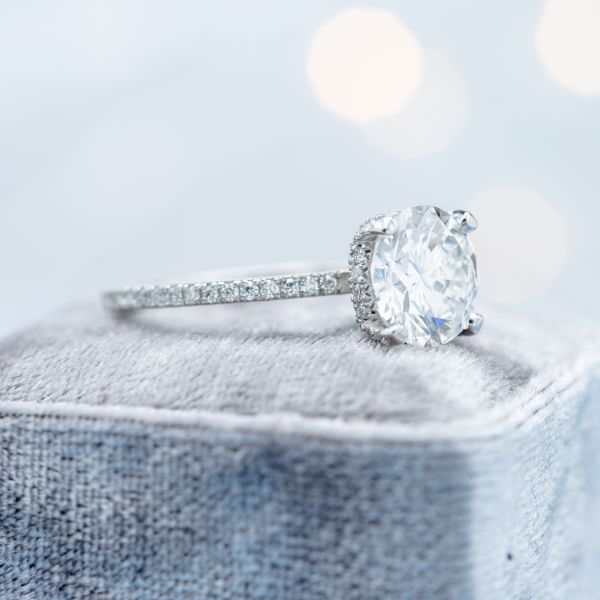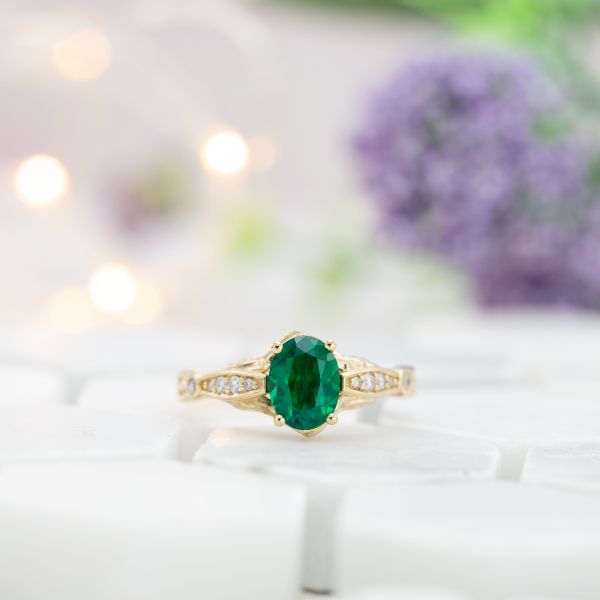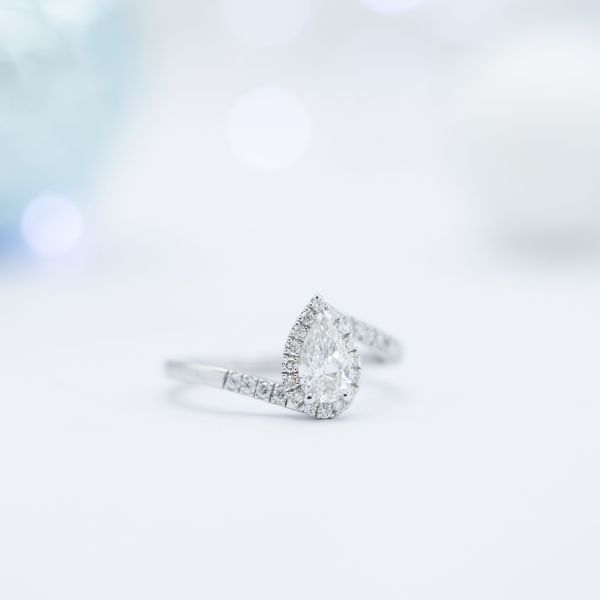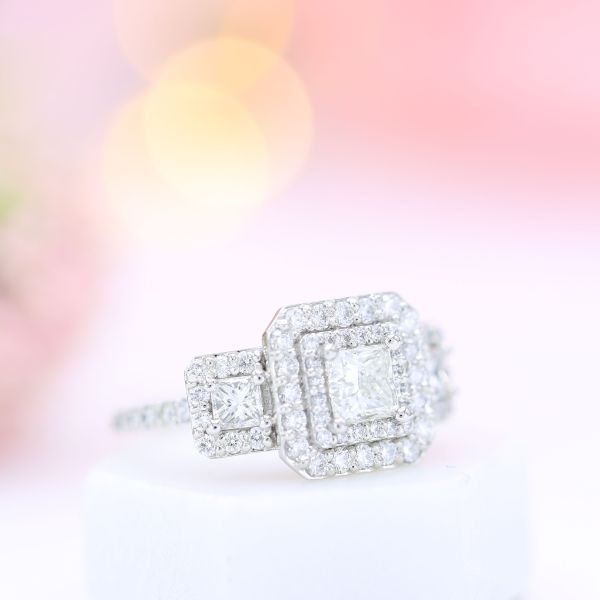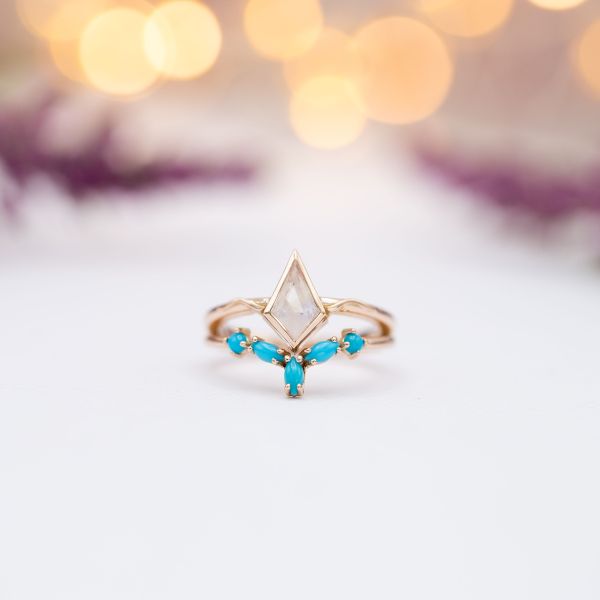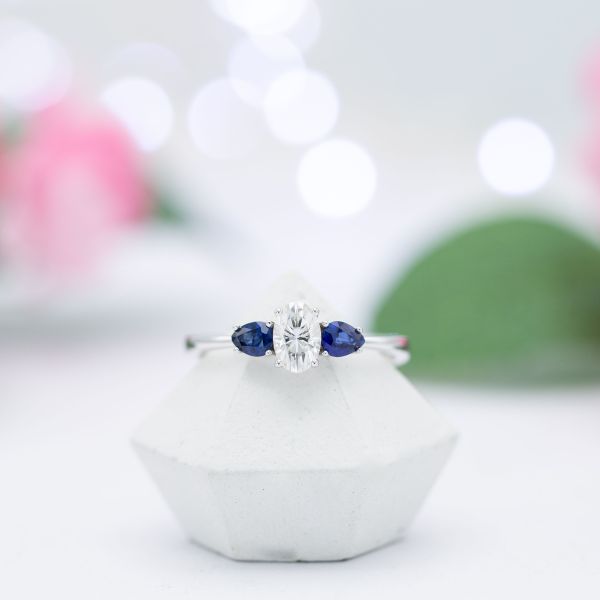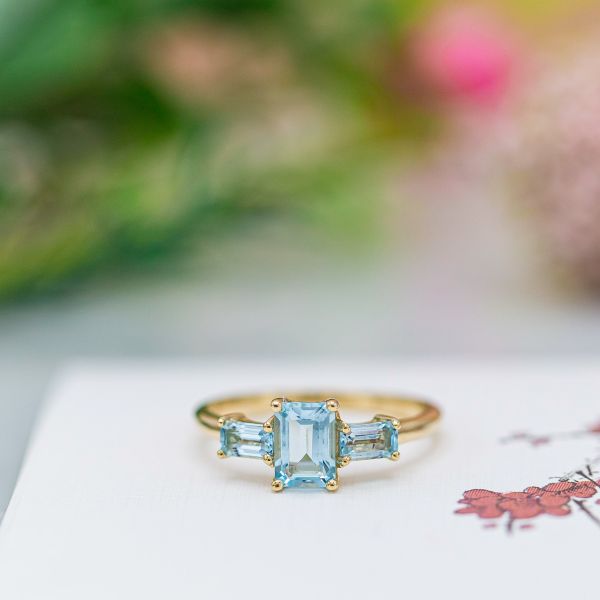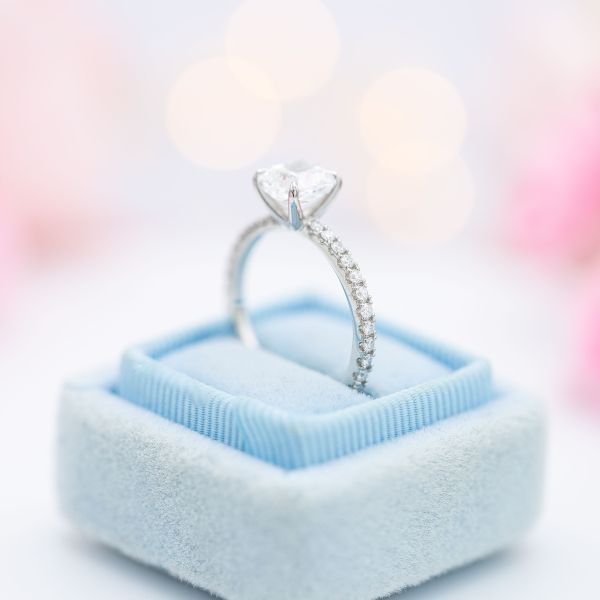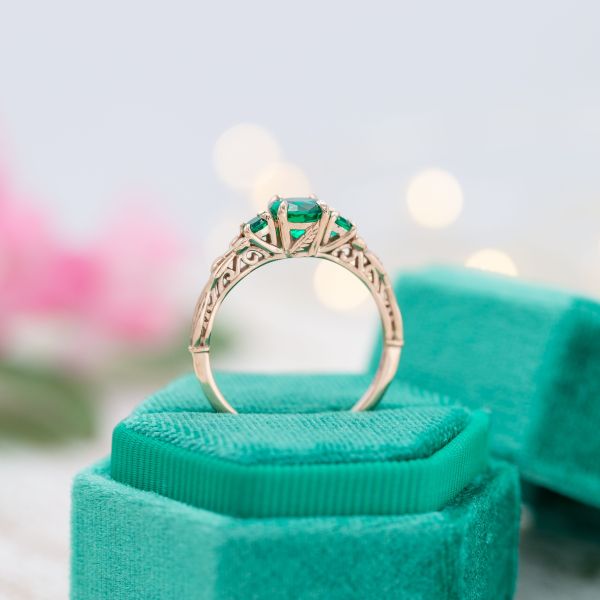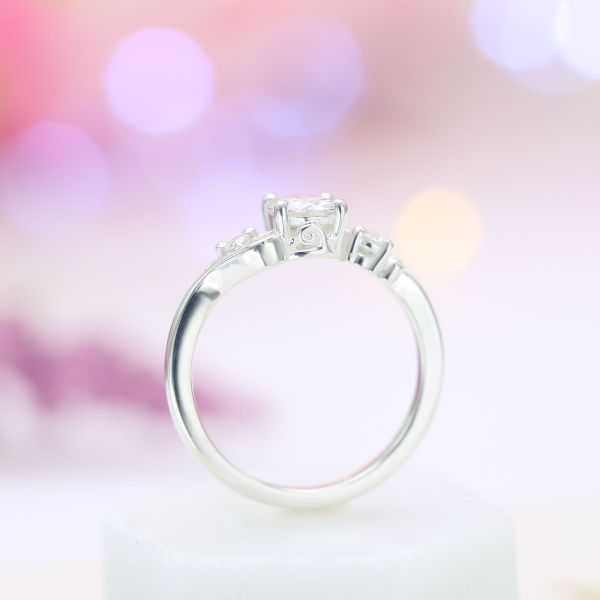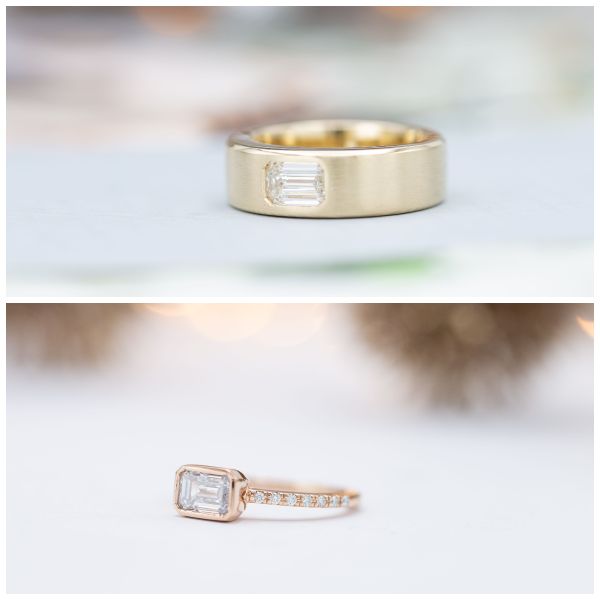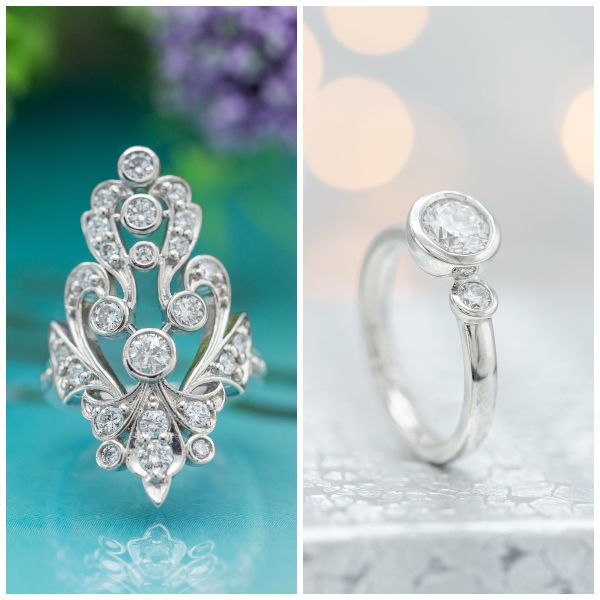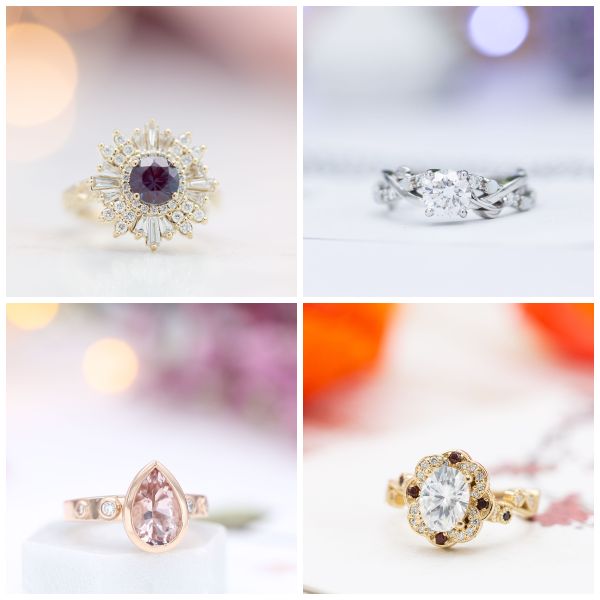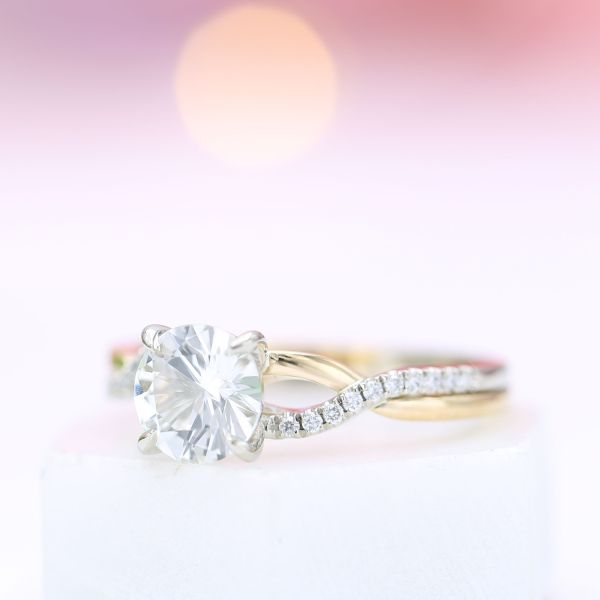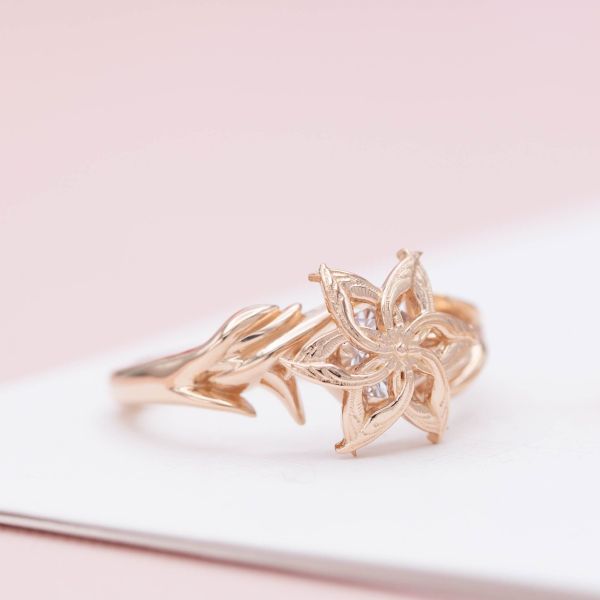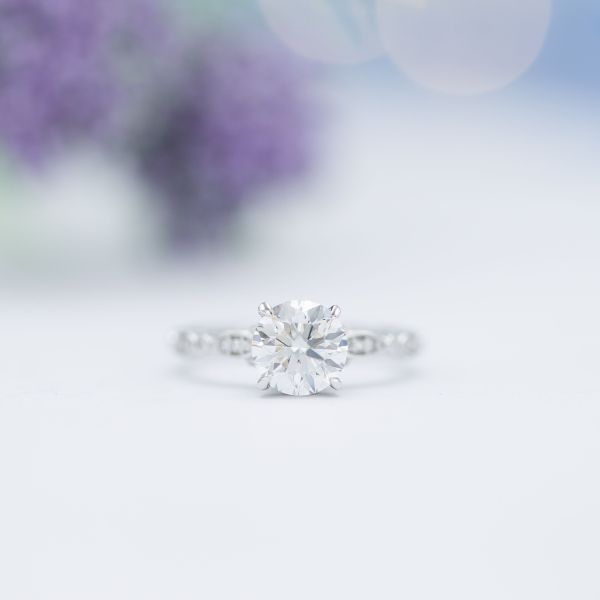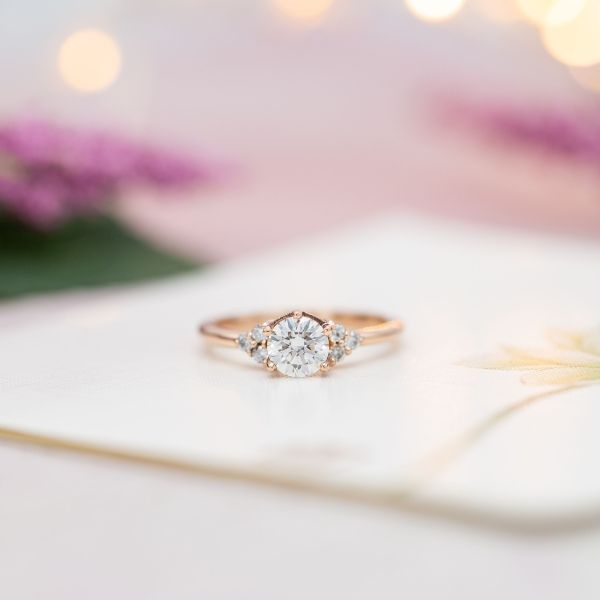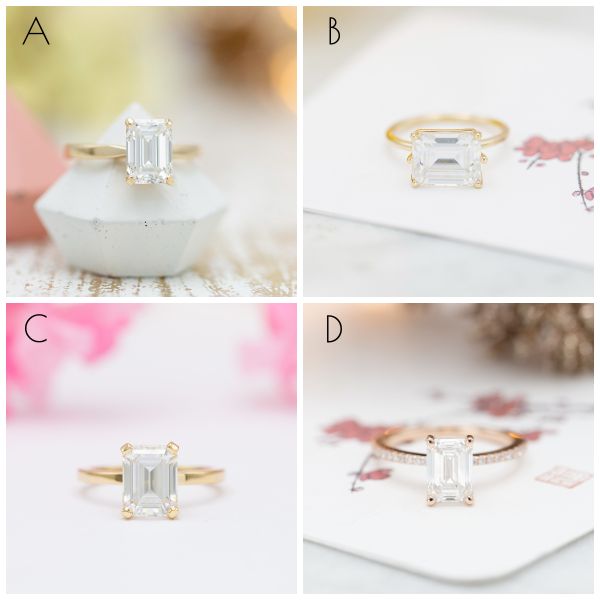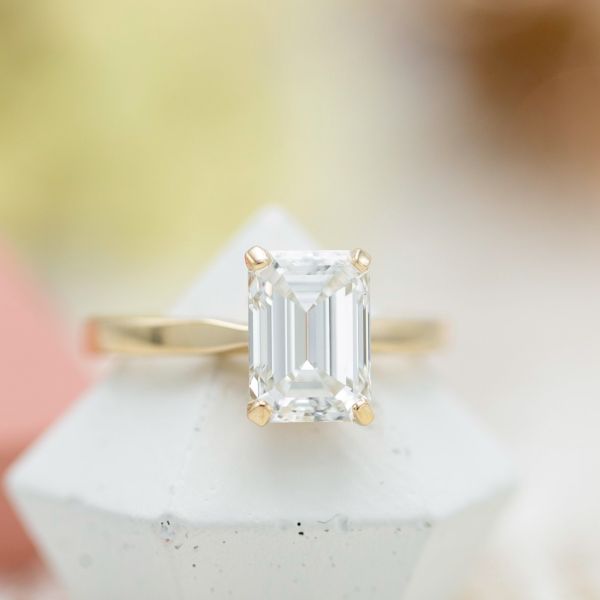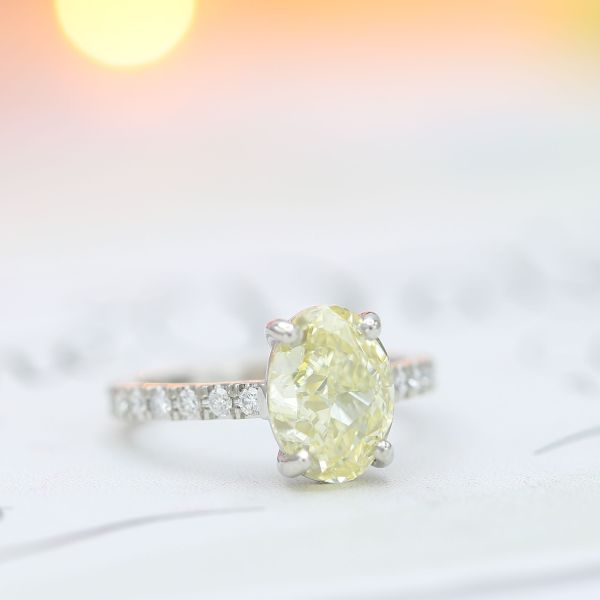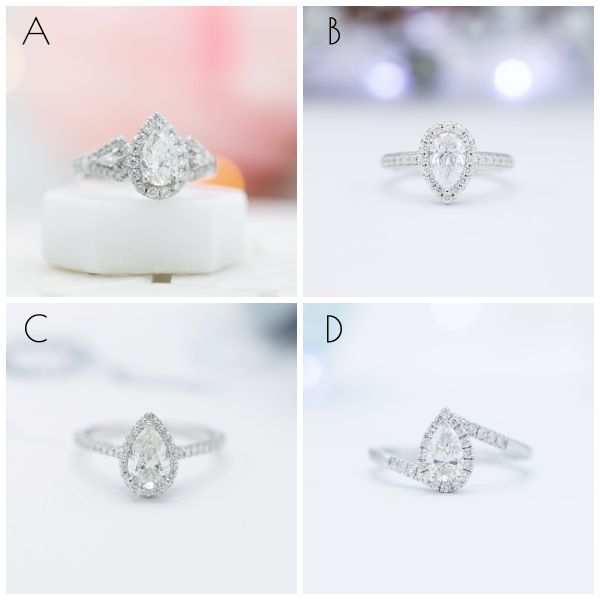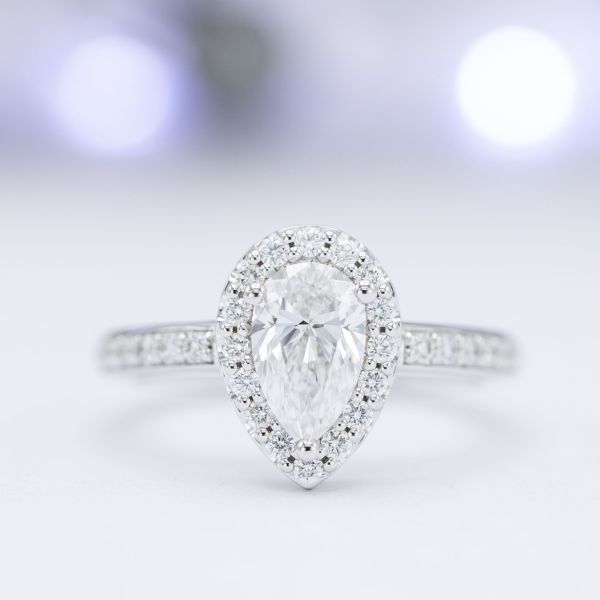How much does a custom engagement ring cost?
A simple breakdown of the four main factors that affect the cost of your engagement ring: center stone, accent stones, metal type, and complexity.
How much does a custom ring cost?
It's everyone's first question, and it's the hardest question to answer simply. Let's start with the quick answer: our custom engagement rings cost $1,000 or more. But, really, it depends. Can we make an engagement ring for less than $1,000? Absolutely. And can we make a 2ct diamond halo engagement ring for $1,000? No, we can't. We'll talk a lot about those nuances below, to help you understand the main choices you'll make, and how they influence the price of your engagement ring. But here's the key message we hope you'll take away from this article: the meaningful experience of designing a custom ring for your special someone is within reach, whether you're looking to spend $1,000 or $10,000.
What does the cost depend on?
We said "it depends." If you're on a budget, you're wondering what exactly it depends on. In this article, we’ll help you understand the four main factors that determine the price of your engagement ring: the center stone, accent stones, choice of metal, and design complexity. We’ll also dive into some strategies to help you understand your priorities and trade-offs between your dream ring and your maximum budget.
- Your choice of diamond or center stone is usually the biggest factor, and can be affected by center stone type, size, quality, rarity, and more.
- The number and size of accent stones on your ring can play a role, especially if you prefer styles that feature many gems like a halo or a pavé band.
- Metal type affects your ring’s durability as well as its price: platinum is more expensive than gold; higher karats of gold are more expensive than lower karats; and so on.
- The complexity of your design can sometimes result in slightly higher costs, to help cover hand assembly of particular components of the ring, sculptural elements, and more.
How much "should" you spend on an engagement ring?
You may have heard of studies saying that, on average, couples spend $3,388 (National Jeweler) or $5900 (The Knot) or even $7,829 (Brides) on an engagement ring. Yep, wildly different answers all around. Or you’ve heard advice telling you to budget a month’s salary.. or two months’... or three months’. You know what we say? Bullsh*t. Not only are these standards all over the place, but they can often be highly unrealistic, cause you unnecessary stress, and ignore the realities of your own life and financial situation.
Our answer? Spend what you want — and what you can realistically afford. You can get a beautiful, meaningful ring at a price that’s right for your budget, no matter what that budget is. Your own priorities are the only priorities that matter. Maybe you’ve been saving up for years because a natural diamond is a must-have. Maybe you’re scraping together what you can, and don’t mind exploring alternative options to see what’s available on a tighter budget. Or maybe you have a specific target in mind, and want to discover what’s out there at your price point. There’s no one-size-fits-all policy: your situation is as unique as your relationship.
By the way, those old salary rules? Completely made up. You can thank a brilliant marketing campaign dating back to the 1930s, on a mission to sell more (and more expensive) diamonds.
The "Big Four" Factors
Center Stone
The gem. The jewel. The rock. Whatever you call it, there’s no denying that the center stone is the star of the show. Curious why one ring might be $2,000 and another might be $20,000? The main reason for that difference will almost always be the center stone.
- Diamonds are by far the most popular center stones, and there’s a lot of variation within diamond prices, particularly when it comes to The “4 Cs”: Cut, Color, Clarity, and Carat. Bigger diamonds cost more than smaller diamonds, and even at the same size, diamonds with higher grades cost more than diamonds with lower grades.
- If you’re interested in a non-diamond center stone, the gem type you choose will be a big factor in the final price tag of your ring: a mined ruby costs more than a lab-created ruby, which costs far more than a garnet of the same size.
Pricing for rings with diamond center stones (and diamond alternatives)
If you've been picturing a diamond center stone, here's a bit more information about the costs of mined diamonds, lab-created diamonds, and popular alternatives like moissanite. In each case, we've given a ballpark of where ring prices start with that center stone. As we'll discuss below, there are trade-offs you can consider to bring the cost of your dream ring in line with your budget, such as a switching from a mined diamond to a lab-created diamond, or upgrading the center stone size by switching to moissanite.
Pricing for rings with colored gem center stones
The world of colored gems is broad, and we've grouped popular gem choices into several pricing tiers below. For those on a budget, some of the trade-off options are straightforward — for example, switching to the lab-created version of the same gem, or one of the more affordable gems with that color. But there's also a lot of nuance to the pricing, so we'd encourage you to talk to our gem specialists if you're trying to make the best choice. For example, classic blue sapphires are often quite a bit more expensive than yellow or green sapphires, and our ballpark prices below represent the most common blue color.
That's right. We said most rings cost $1,000 or more, and our examples above show plenty of center stone choices with prices below that threshold. We can absolutely design and create a beautiful amethyst solitaire, for example, for around $900. But many rings will include some accent gems or a more expensive metal, so we set the expectation that a typical ring will start at $1,000. We did say it depends.
Keep in mind that the prices outlined above are not just for the center stone, they're a starting point for an engagement ring with that center stone. And your ring's total price will be impacted by the specific gem you choose, and by the other price factors discussed below. Speaking of which, let's talk about accent gems.
Accent Stones
Looking to add a bit of extra sparkle to your ring? Accent stones can be an important driver of price too. If you’re just adding a few touches here and there, the impact will be a few hundred dollars or even less. Once you start to increase the size or number of the accent stones — like adding a halo around the center stone, pavé gems covering the band, or larger side stones — it tends to make a bigger difference, into the high hundreds or thousands.
The number of gems usually matters more than the type of gems in determining just how much your accent stones will affect the price of your engagement ring. For side stones, gem type does play a role: a three-stone ring set with half-carat sapphire side stones might cost $2,000 more than the same ring set with blue topaz side stones. But at the small sizes used for halos or pavé, individual stones can be surprisingly affordable, regardless of gem type. For these tiny stones, a large part of the price actually covers the labor required for the jeweler to set each individual stone by hand, rather than the cost of the stone itself. Using lab-created diamond or moissanite might save a few dollars for each gem compared to mined diamonds, but the work it takes to set them still adds up! But rest easy: if you’re on a tight budget, we can always help you find creative ways to glam up your ring without breaking the bank.
Here are a few examples of how the price of accent stones can influence the overall cost of a ring:
Metal Type
Platinum is the most expensive option, and for good reason. It’s widely believed to be the most secure metal for prong settings, so it’ll best protect your center stone. It’s dense and heavy, highly resistant to tarnishing, hypoallergenic, and requires less maintenance over the years than white gold.
Next in line is gold, which you might end up choosing for its great balance of durability and value as well as its wider range of colors. We offer gold in three colors: white and yellow gold are available in 10K, 14K, and 18K, while rose gold is only available in 14K and 18K. A higher karat (“K”) means a higher price tag, because the piece contains a higher percentage of gold and lower percentage of other alloyed metals.
On the lowest end of the price spectrum, there’s sterling silver — a metal which can be great for jewelry like pendants and earrings, but which we typically don’t recommend for rings unless you absolutely must for budgetary reasons. Silver scratches and dents more easily than white gold or platinum, making it far less secure for gem setting. It’s also prone to tarnishing, and for some people, causes skin reactions like turning your finger green.
Our advice is to try and find room in your budget to upgrade to 10K white gold. You don’t necessarily have to spend more money to do this — instead, you might adjust how you’ve allocate your budget, like removing a few accent stones or considering a lab-created diamond instead of a naturally mined diamond, to allow for gold instead of silver.
How big is the price difference? Have a look through the examples below to get a sense for how the metal choice impacts your ring's price. Keep in mind that the price of precious metals can change significantly from year to year (or, in more turbulent economic times, from month to month), so these prices can rise or fall over time.
Complexity
This is the rarest of our “Big Four” price factors, but worth knowing if you’re on a tight budget and curious what kinds of additional features might add to the cost of your ring. We'll highlight two special cases in particular: rings that require a significant amount more metal than usual (such as exceptionally thick, wide, or sculptural designs), and rings that require significant additional labor from our skilled jewelers (such as intensive hand-finishing, casting, and assembly). Here are a few examples to illustrate these cases:
Priorities and Trade-Offs
We always say you can get a great ring at any price — and we mean it! But that doesn’t mean you can get any ring at any price. Sometimes you’ll need to consider your priorities (what’s most important to you?) as well as potential trade-offs (what alternatives are you willing to explore?). Our job is to help you find the best way to get as close as possible to your dream ring, while staying as close as possible to your budget. If those two match up, win-win! If they don’t, we’ll walk through your options with you. We’ll let you know what it would cost to get exactly what you want, and we’ll also share some ideas to achieve a similar look at or near your target budget. That way you can decide: would you prefer to spend a bit more to get exactly what you want, or would you prefer to adjust your design to fit your target budget? Or perhaps land somewhere in between?
Maybe this all makes sense in theory, but how does it play out in reality? Let’s take the case of Andrew, who’s excited to propose to his high school sweetheart, Casey. He wants to surprise her with a beautiful 1.5-carat diamond ring, but they both have student loan debts, so he can’t break the bank: he’s trying to keep it around $1,000, maybe $1,500 max. When he learns that a mined diamond around a carat-and-a-half will cost somewhere between $8,000 and $20,000 or more, depending on color and clarity grades, he’s just about ready to give up and propose to Casey with a ring pop instead. But never fear, Andrew! There are actually some really great options if he’s willing to consider his own priorities and a few possible trade-offs:
- If Andrew is willing to consider a smaller size, a lab-created diamond, and a slightly higher budget, he can get a lab diamond ring closer to 0.8 carats for around $2,000 in 10K white gold.
- Andrew can actually stick to his budget if he uses moissanite, an amazing diamond alternative, and trims down the size by just half a millimeter, the equivalent of a 1.3 to 1.4-carat diamond.
- Let’s get creative! Casey was born in February, so Andrew can feature her birthstone, amethyst, landing under $1,000 with a center stone even bigger than a 1.5-carat diamond. Or perhaps she’d like a more unique-looking cluster setting, with a set of smaller mined diamonds arranged artfully to give the overall effect of a bigger centerpiece.
These are just a few ideas — the possibilities are endless! The point is, Andrew needs to carefully consider his own priorities and what he knows about Casey’s, and find the sweet spot between design, materials, and budget that feels just right to him.
Can you tell...?
We’ve said it before, we’ll say it again: no matter your budget, you can create a gorgeous ring. Let’s put that theory to the test with a fun little challenge! Each set of images below features four similar-looking rings with significantly different price tags. Can you tell which is the most budget-friendly and which is the most valuable?
Round 1
These rings all feature emerald-cut solitaire center stones and delicate yellow or rose gold bands. Can you tell which ring was under $3000 and which one was almost $30,000?
Round 2
Each of these rings boasts a gorgeous pastel-colored center stone. Three of them landed in the $2500-$3000 price range, while one was over $25,000: do you know which?
Round 3
These rings all feature pear-shaped center diamonds glittering with halos and accent stones. One fell just under $4000 with a gorgeous lab-created diamond, while another cost just over $11,000 and boasts a mined diamond with D color and IF clarity, the highest grades on the GIA scale. Can you tell which is which?
How'd you do?
Did you guess the most expensive ring in every case? More importantly, can you imagine anyone being disappointed by any of those 12 beautiful rings? We can't. In fact, we happen to know that there's a "YES! YES! YES! OMG!!! YES!" at the end of the proposal stories of rings with prices under $1500 and those well over $25,000. We hear from our happy couples every day, and what recipients love about their rings has nothing to do with the price — it's all about the thought, meaning, and beauty their partner captured to create their perfect ring.
About CustomMade
CustomMade designs and creates one-of-a-kind, custom engagement rings and fine jewelry. Each piece we create is inspired by you, designed for you, and made just for you.
